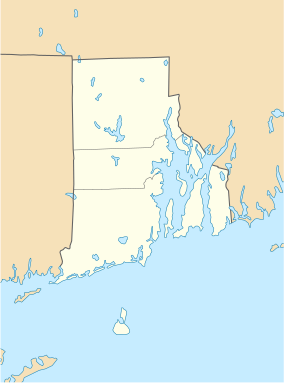Touro Synagogue
| Touro Synagogue National Historic Site | |
|---|---|
 |
|
| Location | Newport, Rhode Island, USA |
| Coordinates | 41°29′22″N 71°18′43″W / 41.48944°N 71.31194°WCoordinates: 41°29′22″N 71°18′43″W / 41.48944°N 71.31194°W |
| Area | 0.23 acres (0.093 ha) |
| Established | March 5, 1946 |
| Governing body | Touro Synagogue Foundation |
| Website | |
|
Touro Synagogue National Historic Site
|
|
| Area | less than one acre |
| Built | 1763 |
| Part of | Newport Historic District (#68000001) |
| NRHP Reference # | 66000927 |
| Significant dates | |
| Added to NRHP | October 15, 1966 |
| Designated NHLDCP | November 24, 1968 |
The Touro Synagogue is a 1763 synagogue in Newport, Rhode Island, that is the oldest synagogue building still standing in the United States, the oldest surviving Jewish synagogue building in North America, and the only surviving synagogue building in the U.S. dating to the colonial era.
In 1946, it was declared a National Historic Site.
Touro Synagogue was designed by noted British architect and Rhode Island resident Peter Harrison and is considered his most notable work. The interior is flanked by a series of twelve Ionic columns supporting balconies which signify the twelve tribes of ancient Israel, and each column is carved from a single tree. The building is oriented to face east toward Jerusalem. The ark containing the Torah is on the east wall; above it is a mural representing the Ten Commandments in Hebrew which was painted by Newport artist Benjamin Howland.
The Touro Synagogue was built from 1759 to 1763 for the Jeshuat Israel congregation in Newport under the leadership of Cantor (Chazzan) Isaac Touro. The cornerstone was laid by Aaron Lopez, a philanthropist and merchant in Newport involved in the spermaceti candlemaking business, slave trade, and other commercial ventures. The Jeshuat Israel congregation itself dates back to 1658 when 15 Spanish and Portuguese Jewish families arrived, probably from the West Indies, and many settled near Easton's Point. The synagogue was formally dedicated 2 December 1763. Other notable leaders include Abraham Pereira Mendes and Henry Samuel Morais (1900–01).
...
Wikipedia



